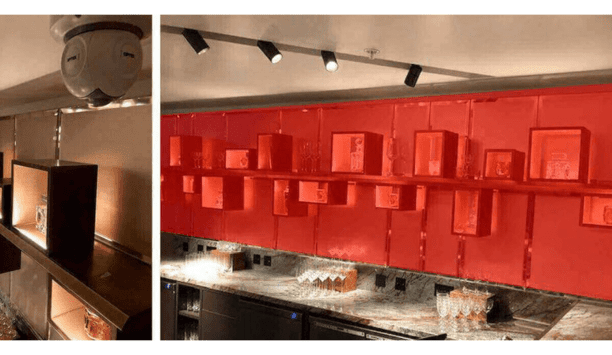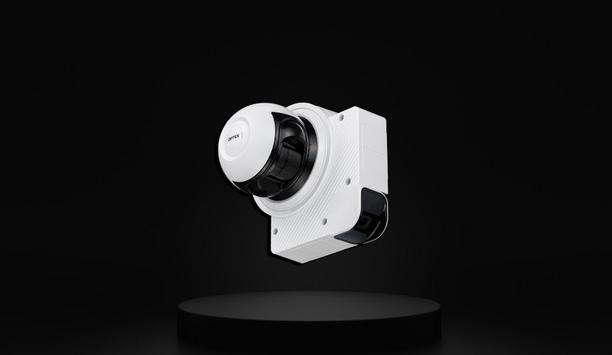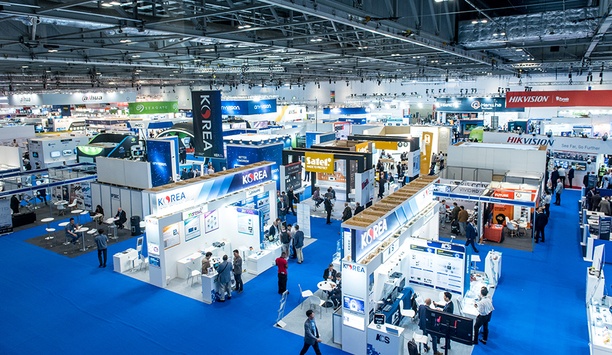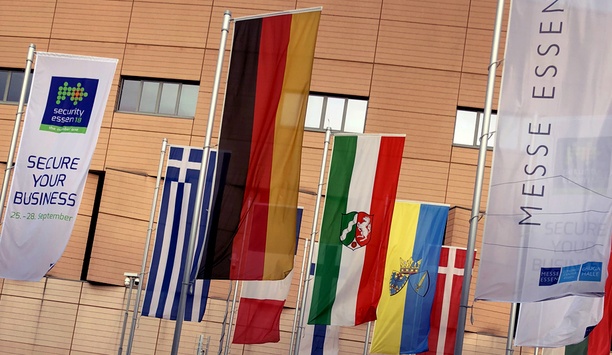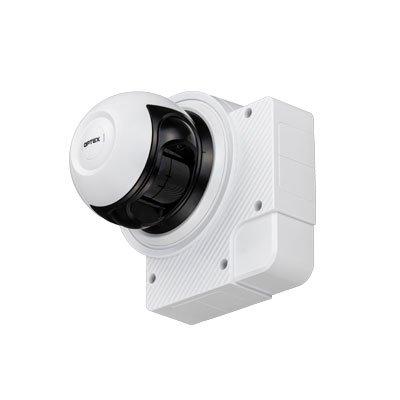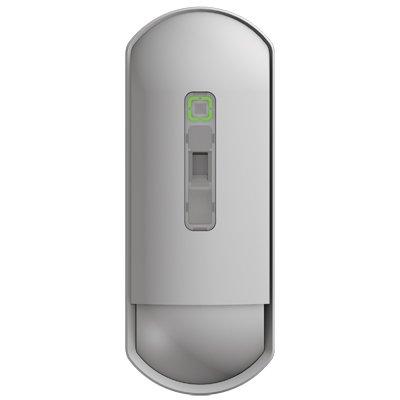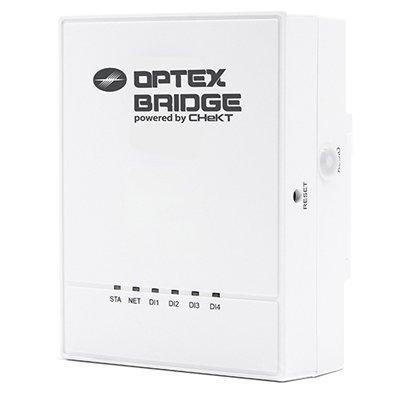OPTEX - Experts & Thought Leaders
White papers from OPTEX
Precision and intelligence: LiDAR's role in modern security ecosystems
DownloadLatest OPTEX news & announcements
The recent theft of luxury wines from Spanish restaurant, Atrio, highlighted one of the greatest difficulties when it comes to security in the entertainment sector. From museums and art galleries to wineries, hotels, and restaurants, protecting against theft, vandalism and unauthorised handling of goods is a continuous challenge in the tourism industry. Despite the wide variety of issues, there is a key differentiating element, which is that these are places open to the public, where security must coexist with daily business operation and must not deteriorate the visitor experience. Perfect security solution This is a key aspect to consider when designing an effective security strategy, with 2D LiDAR sensors positioned as the perfect security solution. Laser detectors based on LiDAR technology (Laser Imaging, Detection and Ranging) allow users to protect goods very discreetly on display by detecting hands or objects that come too close to them. Laser detectors based on LiDAR technology allow users to protect goods very discreetly The sensor creates an invisible virtual wall or curtain that protects the cabinets or shelves where the items are on display, precisely excluding other areas, thus avoiding the effect on the user experience. Because of their smart and versatile detection, LiDAR sensors are successfully used in a wide variety of applications. Security in warehouses, bars, and restaurants Bars and restaurants often offer diners a selection of fine wines and spirits. Wineries and cellars have also become a tourist attraction, and an important part of the experience is usually to visit areas where high-value products are stored. In these confined spaces, the precise detection of LiDAR technology can alert if a bottle or item is removed from the shelf. For example, in the case of The Londoner luxury hotel in the UK, its six bars and restaurant areas have REDSCAN LiDARs installed to protect their expensive beverages on display. The laser sensor creates an invisible wall and continually scans the detection area; the size of the detection zone can be configured for objects as small as 2.5 cm, so that if any hand or object were to enter the detection area, the alarm would trigger, alerting staff by activating cameras or sound alerts. The precise detection of LiDAR technology can alert if a bottle or item is removed from the shelf Protection in art spaces At the same time, LiDAR allows users to create separate zones within the detection area and link them to arming and disarming alarm systems, or access control credentials to not obstruct day-to-day work. Similarly, in museums, galleries, and art exhibitions, 2D LiDARs are used to create a virtual ‘shield’ that allows customers and visitors to enjoy works of art while protecting them, activating alerts with extreme precision only when someone or something approaches the protected art. Whether intentionally or not, paintings, sculptures, and other pieces of art face a series of threats—it could be a curious hand, a child playing or a real theft attempt. This can occur during opening hours or while the business is closed, but in all cases losses due to stolen or damaged art can be very significant; therefore, adequate protection is required. Complete wall protection LiDARs allow different settings to protect the same space to adapt to security needs Some artistic goods can be protected in a display cabinet, but, in most cases, art is exhibited without any physical protection. So that visitors may connect with the art, it’s important that security should not get in the way nevertheless threats must be identified quickly and accurately and security personnel must be alerted. LiDARs allow different settings to protect the same space to adapt to security needs depending on opening and closing times. For example, only valuables can be protected during opening hours, and complete wall protection can be set up when the exhibition is closed. It’s important that security should not get in the way nevertheless threats must be identified quickly Security at festivals and seasonal events The organisation of festivals requires mobilising large electronic and AV equipment, instruments, costumes, props, and more. The short-term nature of these events can be a significant vulnerability when it comes to protecting all these high-value goods and, to some extent, limits security options. The solution must be quick to implement and not require an existing structure or fixed wiring. The LiDAR sensor can create a virtual wall that alerts if someone enters the warehouse area A LiDAR with a built-in camera, such as the new REDSCAN Pro model, allows the creation of a security system in these environments, offering extremely precise and ultra-fast detection to initiate security events, together with a camera for video verification of alarms and event recording. Mounted on a retractable pole and easy to install and transport, the LiDAR sensor can create a virtual wall that alerts if someone enters the warehouse area or parking areas, where equipment is usually stored. Accurate detection technology In addition, the LiDAR wall can alert if someone or something enters hazardous areas, such as fuel tanks or electrical generators, immediately alerting someone to their approach to these areas and setting off a sound warning or informing the security team. With the use of smart, versatile, and accurate detection technology, security goes from being a reactive process to a proactive, much more agile, and effective security system. LiDARs offer the precision and reliability that high-value goods need, in addition to being aesthetically discreet, both because of the type of protection they offer (a very thin invisible laser curtain) and because the cover can be customised to adapt them to the environment where they are going to be installed.
One of the key problems in airport security is the sheer size of the perimeter and a large number of incidents are in fact linked to unauthorised access onto the airfield, either runways or where aircrafts are being loaded or refuelled posing an extremely high risk. Most airports will combine multiple sensors and technologies to protect the actual perimeter fence and even beyond the perimeter fence, to warn of potential threats. OPTEX LiDAR sensor integration with RSA module Some airports have found the level of information generated by the perimeter security systems quite challenging to deal with and they wanted to decrease the number of events so operators could focus on what was critical. The Airport development team at Genetec integrated the OPTEX LiDAR sensor into their Restricted Security Area (RSA) Surveillance module, an extension of the Genetec Security Center platform with the purpose to unify data from the sensor and camera to present more meaningful information to the operators. Restricted Security Area Surveillance module The RSA module has been designed specifically with a view to providing wide area protection The RSA module has been designed specifically with a view to providing wide area protection and integrating with wide area surveillance technology, including radar, fibre optic and laser detection devices. The solution allows security staff to determine the level of threat for each area, map them, and utilise OPTEX technologies to identify and locate quickly and precisely the point of intrusion. For instance, with Fibre optic fence sensor, zones can be 100m-200m long and will identify people cutting through a fence, crawling under or climbing over. Newer fibre technologies provide point location. Another way to pin-point exact intruder location is with OPTEX LiDAR technologies or with Radar. ‘Fuse’ data into a single event A particularly intelligent feature of the system is its ability to ‘fuse’ data (known as ‘target fusion’) coming from multiple sources and confirm an event as a single (i.e. the same) activity rather than a multiple threat. For instance, using the X&Y coordinates provided by OPTEX REDSCAN sensors, RSA allows to map exactly the path of the intruders or moving vehicles, fuses the path from one camera to the other and considers it as one event, one target and tracks it precisely on the map. Intelligent tracking and event categorisation This gives a more meaningful picture to the operator and presents events in a unified and intelligent way. This helps support the security team in making the right decisions. The deeper integration of OPTEX’s technologies into Genetec’s RSA platform enables intelligent tracking and event categorisation, making it a very precise security system for airports.
Pioneering global sensor manufacturer OPTEX will be exhibiting at the International Security Expo (ISE) to showcase the advanced capabilities of its range of intrusion detection solutions. For the high-security environments, including critical infrastructure, logistics centres, banks, museums, luxury residential properties and more, OPTEX will be providing a series of live demonstrations of its award-winning REDSCAN LiDAR sensors throughout the show. REDSCAN sensors REDSCAN sensors enhance environmental resistance to provide avant detection in all conditions Extremely reliable and accurate, as well as versatile, the sensors can be mounted horizontally to create virtual laser planes to protect roofs and ceilings or vertically to protect facades, narrow spaces or corridors and high-value assets. REDSCAN sensors also feature enhanced environmental resistance to provide advanced detection in all environments, even in extreme weather, operating from −40 to +60 degrees, and even in complete darkness. REDSCAN mini-Pro Various models from the REDSCAN range, providing short and long-range detection will be showcased live on stand, including the latest addition to the series, REDSCAN mini-Pro, which provides an extra layer of security intelligence with a built-in FHD camera with infrared LED for ultra-fast visual verification of what has triggered an alarm. For critical sites with large perimeters, such as airports, military sites, mines, solar farms and electricity substations, OPTEX will demonstrate its latest evolution in fibre optic sensing solutions, EchoPoint Distributed Acoustic Sensors (DAS). Intelligent detection algorithms Sensors utilise intelligent detection algorithms to provide point detection of ±6 m in a range of up to 100 km The sensors utilise intelligent detection algorithms to provide point detection of ±6 m in a range of up to 100 km, with the ability to be mounted and operated across multiple applications – installed on fences above ground, buried or in a hybrid layout. Ben Linklater, Commercial Director at OPTEX, says the International Security Expo provides the ideal platform to showcase OPTEX’s pioneering sensing and detection solutions and connect with the global security market: “ISE is rightly recognised as one of the standout events in the global security calendar that brings the industry together to showcase the latest innovations and advancements in technologies and solutions. We are looking forward to connecting with partners, colleagues and customers alike to showcase our broad range of advanced and pioneering intrusion detection solutions that can be combined to create a unified and multi-layered security system.” New and existing security technologies OPTEX will also use ISE 2024 to showcase the Olarm MAX, a smart communicator, which has recently been launched in the UK. Coming at a time when the old Public Switch Telephone Network (PSTN) is being phased out, and users will be obliged to switch to a digital communicator, Olarm MAX provides a simple upgrade solution that is easy to install and enables new and existing security technologies to be managed conveniently and remotely via the Olarm app with a level of user experience second to none. ISE 2024 has a long-standing reputation as the go-to event for those working at the highest levels of global security, and will take place 24th-25th September at Olympia Events in London and visitors can find OPTEX’s booth at Stand C41.
Insights & Opinions from thought leaders at OPTEX
Time for an indepth review of IFSEC 2019 in London. This show had fewer exhibitors than previous shows, and the ‘vibe’ was definitely more low-key. Fewer exhibitors meant larger aisles and plenty of room to breathe, and the slower pace provided time for exhibitors to reflect (often negatively) on the return on investment (ROI) of large trade shows. There was little buzz on the first day of the show, but spirits picked up on the second day (when, not coincidentally, some exhibitors served drinks to attendees at their stands). Enterprise security solutions One eye-catcher was smart wireless security provider Ajax Systems’ stylish black stand Many exhibitors compared IFSEC unfavourably to ISC West in the United States and even to Intersec in Dubai. Others seemed willing to be lured back to Birmingham (previous location for IFSEC) to participate in the upstart competitor, The Security Event, next spring. However, not all the IFSEC 2019 reviews were negative. Vaion made the most of their small stand toward the back of the hall. They experienced brisk traffic right up until the end of the show. Happy with the response, the provider of real-time enterprise security solutions reportedly has already committed to IFSEC 2020. Other exhibitors also made the most of their space at IFSEC; one eye-catcher was smart wireless security provider Ajax Systems’ stylish black stand. Vaion made the most of their small stand toward the back of the hall Latest new products Nedap launched a new product, AEOS 2019.1, that is five time faster and more stable than its predecessor. It uses HTML5 – no more reliance on Adobe. Feedback has been good. The company has also increased its integration of open security standards (OSS). Traka showcased smart lockers, which are modular, scalable, and staff can easily replace broken equipment. Product features can be adapted to specific sectors (i.e., retail, prisons). Traka spends 30% of its revenue on research and development, developing their own engineering. The company has seen massive growth in the UK and Europe. Hanwha Techwin lured visitors into the center of their stand with drinks and ice cream, surrounded by the latest new products. Hanwha promoted their investment in a manufacturing facility in Vietnam and showcased Wisenet cameras with enhanced 4K images, digital auto tracking, and less motion blur for clearer images. Video verification product A multi-sensor model captures wide areas with a single camera. Hanwha also offered some value-priced cameras that feature easy self-install and are swappable. Optex launched a new product called ‘the Bridge’, a video verification product that bridges CCTV on a digital video recorder (DVR) to intruder alarms. Hanwha showcased Wisenet cameras with enhanced 4K images UK Surveillance Camera Commissioner Tony Porter announced ‘Security By Default’, a set of minimum requirements that will guarantee users that network video security products are as secure as possible in their default settings right out of the box. Hikvision promoted their support for Secure by Default and expressed hopes the initiative would be embraced by other companies and create a new best practice for camera cybersecurity. Hikvision also promoted their retail solution, which includes on-site redaction for GDPR compliance, shelf detection incorporating artificial intelligence, and use of heat mapping to analyse customer foot traffic. Generating revenue Safety and Security Things (SAST), another IFSEC exhibitor, is in the process of creating an ‘app store’ for the security market. Striving to achieve critical mass with participation by a wide range of systems integrators and manufacturers, SAST has a goal of launching to the public in Q1 next year in time for ISC West. Hanwha Techwin is among the players that have already joined the alliance A pilot version will debut this autumn, and they already have 26 apps and six camera manufacturers toward that goal. With a staff of 120, mostly based in Munich, SAST expects to begin generating revenue in 2020 and to grow rapidly. An investment by Bosch is financing start-up operations. Open Security & Safety Alliance (OSSA) is creating standards and a platform to enable the sale of apps in the security market. Large industry players Hanwha Techwin is among the players that have already joined the alliance, and OSSA is seeking to add other large companies, such as Axis, Genetec and Hikvision. Engaging integrators, app developers and software providers as well as camera manufacturers will generate widespread support to ensure the initiative succeeds. Although currently most OSSA members are based in the EU and Asia, it is a global organisation open to any company in the world. Many large industry players are now missing from the IFSEC show floor; the most noticeable new abstainer this year was Milestone. And the downturn seems likely to continue: Exhibitors were largely noncommittal about returning next year, although organisers were urging them during the exhibition to sign up for 2020.
Security Essen 2018, held in Messe Essen, Germany, promised attendees a newly modernised trade show with a simplified layout and more interactive experience. Compared to previous years, halls were reorganised by technology area, with aisles laid out to make more direct pathways for attendees. The fair welcomed 950 exhibitors and more than 36,000 trade visitors from the global security market. Several manufacturers mentioned that footfall had been lighter than expected, but that the show had delivered on its promise to welcome more international visitors, in particular from the Middle East region. Exhibitors also grumbled about higher costs for booth space. Key security industry exhibitors Exhibitors expressed concern that the absence of key players reduced overall foot traffic Exhibitors praised the bigger aisles, which made it easier for visitors to navigate the show. However, some were unsure whether this was due to a better layout or simply because the show was missing key exhibitors. Notably absent were access control provider Dormakaba, security solutions company Honeywell, and surveillance providers Geutebruck and Dallmeier. Exhibitors expressed concern that the absence of key players reduced overall foot traffic. Security Essen hosted a particularly strong access control presence. Halls 2 and 3 were home to companies from across the access control and mechatronics spectrum. Sponsorship by EVVA covered the west entrance. The locking systems manufacturer, which celebrates its 100th anniversary next year, boasted significant floorspace. Exhibitors were pleased with the large access and locking presence, commenting that London-based IFSEC International tends to be dominated by video surveillance providers. EVVA, which celebrates its 100th anniversary next year, boasted significant floorspace Deep learning and artificial intelligence The push toward artificial intelligence (AI) in physical security continues, although the tone at Security Essen seemed to be shifting beyond hype and more toward how the technology can actually add value. For example, Hikvision’s cameras boasted more intelligence and processing power, and the company emphasised faster-paced product cycles. Customers ultimately do not buy AI – they buy benefits and solutions VIVOTEK embraced artificial intelligence as the biggest trend in the industry. The company demonstrated its latest deep learning technology for crowd detection applications. For Dahua, artificial intelligence allows users to easily search metadata in a video, including age and behaviour. Dahua demonstrated its solution for the transportation market, which is able to learn if a bus or train driver is falling asleep at the controls. However, some manufacturers chose not to focus on artificial intelligence. Representatives from Brivo and Eagle Eye Networks highlighted that customers ultimately do not buy AI – they buy benefits and solutions. Historically, video analytics were oversold and underdelivered, and the same could happen to AI if the term is overused in marketing security solutions. VIVOTEK embraced artificial intelligence as the biggest trend in the industry The German market & GDPR While the fair welcomed an increase in international visitors, many stands offered a distinctly German flavour. Exhibitors catered to German customers’ preference for data protection and high levels of privacy. Visitors were welcomed to the show by banners from Genetec, emblazoned with the slogan “Privacy matters… So, remember to forget me.” The video security provider’s stand demonstrated this concept more tangibly, via its Privacy Protector Module. The surveillance software, which is certified with the European Privacy Seal (EuroPriSe), monitors events while automatically pixelating people and vehicles in real time. If an incident occurs, an authorised operator can securely access the unaltered video. Visitors were welcomed to the show by banners from Genetec Other companies also acknowledged issues of privacy and cybersecurity. Hikvision noted that Europe is more regulated, which limits the implementation of the company’s products compared to those used in China. Dahua emphasised that its data for the German market is stored in Frankfurt to meet demands for data protection. IDIS made a point of saying there are no backdoors to their products. The deep learning products are easy to use and 96% accurate, says the company. FLIR has developed a cybersecurity hardening document, and strives to be transparent about cyber issues, including a web landing page where customers can raise any concerns. Vanderbilt is also pushing the cloud as a way forward with its ACT365 cloud-based access and video solution. Users are not intimidated by the cloud anymore since we all use it in our personal lives, says the company. Also on the access control side, EVVA were clear on the security of their AirKey mobile access system, which uses technology based on internet banking, double encryption and high-quality hardware. As well as demonstrating its SAROS thermal camera, FLIR strived for cybersecurity concerns to be addressed by customers Taking a broader view Nedap views security as being about allowing people to focus on their daily lives and work, safe in the knowledge that security is being taken care of. At the show, Nedap launched its new slogan ‘Security for Life’, stating that “true security is when you don’t have to think about it”. Nedap’s global client program represents a long-term commitment to projects. They are having more discussions with clients about risk management through standardisation and centralised policy.Solutions – as opposed to products – were also a focus at Security Essen, as at IFSEC before it Clients remain with Nedap because they keep investing in the platform, constantly updating the code and simplifying it to improve scalability for organisations, says the company. Nedap had one of the few double-decker booths at Security Essen. Solutions – as opposed to products – were also a focus at Security Essen, as at IFSEC before it. HID Global touted their extensive use of partnerships to provide solutions. SeeTec highlighted their move away from products to a more solution-based approach. FLIR, perhaps best known as a thermal camera company, were pushing their solutions approach to markets including intelligent traffic, smart city, video management and PSIMs. Nedap had one of the few double-decker booths at Security Essen Vertical markets in focus As vertical markets go, retail was big, and several players were offering some type of retail solution. Retail – along with banking, finance and transportation – was among Hikvision’s vertical markets of choice. Dahua's new panoramic cameras stitch together the image inside the camera instead of on the server SeeTec’s retail solution combines EAS with business intelligence and heat mapping. Dahua’s retail offerings include people counting and emotion detection, which can correlate with weather data, for example. Genetec also showcased a range of retail solutions. Technology improvements announced at Security Essen include FLIR's more robust FB6 series thermal line, Promise Technology's SMARTBOOST technology improved playback performance, and Videotec's cameras with better night performance. The extended 50m range of Optex's intrusion detection laser sensor reduces the need for cameras. Dahua's new panoramic cameras stitch together the image inside the camera instead of on the server. The Hanwha Techwin booth featured Korean flags and a “Korean at heart” motto to set the company apart Signs of the U.S. congressional ban There were signs at Security Essen of an impact of the recent U.S. ban on use of Hikvision and Dahua equipment in government installations, although both big Chinese manufacturers maintained a high profile at the German show. For example, the Hanwha Techwin booth featured Korean flags and a “Korean at heart” motto to set the company apart. Chinese camera manufacturer Uniview were keen to stress that they are not owned by Chinese government (neither is Dahua). Uniview’s all-IP camera line offers high resolution, low-light, multisensor and fisheye options, and AI software provides facial recognition, object detection, and fire and smoke detection at the edge. The company aims to increase its global presence with more international branch offerings and international factories.
Amid all the discussion of security integration and end-to-end solutions on the first day of IFSEC 2016 was an undercurrent of uncertainty. The international trade show opened at ExCel London just days before the historic "Brexit" vote, when Britons will decide whether to remain a part of the European union or to exit the politico-economic fusion of 28 member states. With the Brexit referendum this week, the polls are neck-and-neck, so the vote could go either way, hence the uncertainty. If "leave" wins the vote, what might it mean for business, including the security and video surveillance companies exhibiting at IFSEC? Brexit implications on security market For example, if Great Britain leaves the EU, might it increase costs of goods flowing throughout the larger European market? Would a distributor in Germany face new costs and/or more complex processes when sending equipment to Britain? EU laws would still apply during a two-year negotiation period if the UK votes to leave. Therefore, changes are unlikely to be immediate; however, long-term uncertainty can be bad for any market, whether it's the stock market, the currency market, or the security market. "Once you exit the EU, there may be different rules related to larger contracts," says Ivo Drent, Arecont Vision's Vice President of European Sales. "Suddenly a UK company quoting jobs in the EU will face a different climate." Manufacturers from other countries, including the Asia-Pacific (APAC) region, would eventually need to renegotiate export contracts with the newly independent United Kingdom. Given a skilled labour shortage in the UK integrator market, might a "leave" vote also complicate the ability of companies to recruit candidates from neighbouring countries, and thus aggravate the problem? Dominant security themes at IFSEC Although Brexit was a topic of discussion at several IFSEC stands, there were plenty of other aspects of the security market to consider, too. Manufacturers here are enthusiastic and quick to tout their new products, although many of them were shown previously in the United States last spring at ISC West. However, they're new to the international visitors to IFSEC. Also, the themes of integration, end-to-end systems, and technology partnerships dominated discussions. New products at IFSEC 2016 If "leave" wins the vote, what might it mean for business, including the security and video surveillance companies exhibiting at IFSEC? Arecont Vision was among the companies introducing actual new products here, including the new SurroundVideo Omni Mini IP Dome Camera, a 2-, 6- or 10-megapixel all-in-one camera with two sensors that are remotely user-configurable and provide true day/night video suitable for indoor/outdoor use. The low-profile camera is useful in schools, retail and banking (ATM) applications. Its small size makes it less noticeable and unobtrusive, even in environments that are sensitive to aesthetics. It replicates many of the benefits of Arecont Vision's four-sensor SurroundVideo cameras in a smaller form factor and at lower cost. "It can replace multiple single-sensor cameras or pan-tilt-zooms (PTZs), and give coverage exactly where you want it," says Jeff Whitney, VP Marketing, Arecont Vision. "If you cover a wide area, you never lose situational awareness." An emphasis on solutions rather than single products is another theme you hear repeatedly this year at IFSEC. For example, the sensor company Optex is promoting its REDSCAN mini RLS-2020I, an indoor laser scan detector that provides a 20x20-meter vertical or horizontal detection area, as an adjunct to video analytics. The sensor helps to protect assets and equipment by creating an invisible laser wall that detects any intrusion. Combined with a video analytics system, the hardware can increase reliability and eliminate false alarms. Leveraging the two technologies creates a result that is greater than the sum of the parts. A demonstration at the stand involves a display of drink glasses and spirits (as might be seen at a bar after closing). A "laser wall" protects the display: Anyone who tries to touch a glass triggers an alarm. The alarm trigger is faster and more accurate than a video analytics approach - there is no delay as pixels are processed. The detection zone can be divided into four sections, with each linked to a PTZ preset that directs camera coverage where it is needed. Technology partnerships Technology partnerships are also making news. Milestone opened the show with a press conference announcing an agreement with Dell to introduce a range of "plug and play" solutions for the surveillance market. The solutions can support 8, 16, 26 and 48 cameras and come complete with Milestone Xprotect and Microsoft Embedded licenses. There will be more to see on the second day of the show, and possibly more Brexit discussion, too. The vote is on Thursday, the last day of the show.
Using artificial intelligence (AI) to automate physical security systems
DownloadA modern guide to data loss prevention
Download7 proven solutions for law enforcement key control and asset management
DownloadThe truth behind 9 mobile access myths
DownloadAccess control system planning phase 2
Download-300.jpg)





























